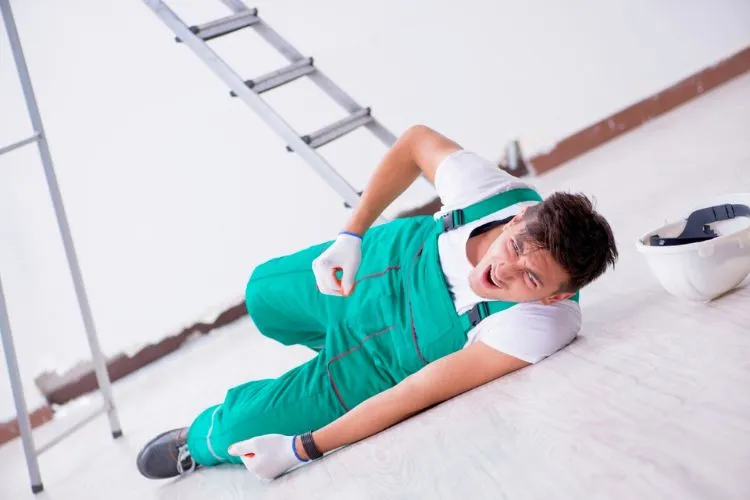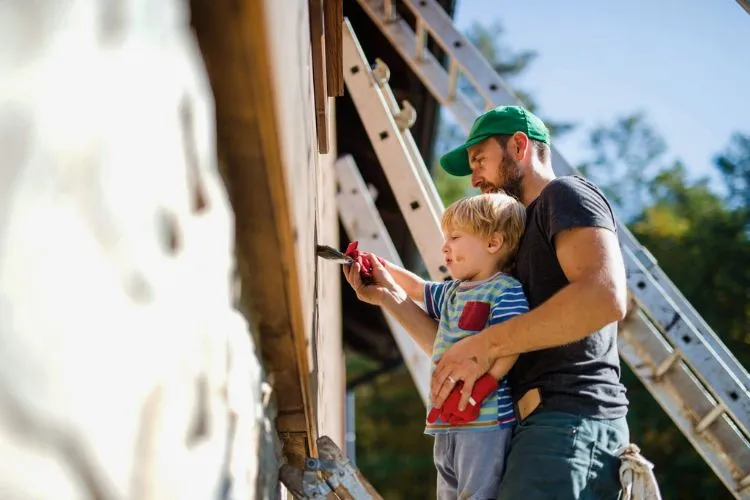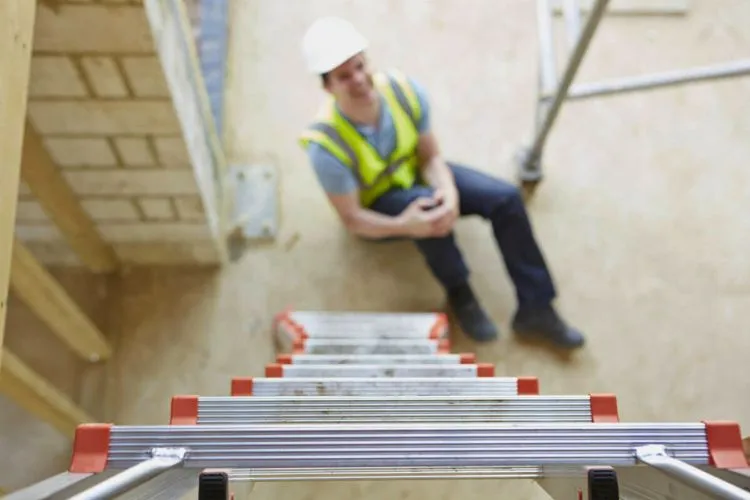Ladders are indispensable tools in both domestic and professional environments, facilitating access to high places and making tasks like painting, cleaning, and maintenance more manageable.
However, the utility of ladders is matched by the risks they present when not used correctly or when they are in poor condition.
Recognizing these most common ladder hazards is the first step towards preventing accidents and ensuring ladder use is as safe as possible.

Why Ladder Safety is Important?
Each year, ladder-related accidents account for thousands of injuries and even fatalities. Statistics indicate that a significant number of falls from heights involve ladders, highlighting the critical need for awareness and education on ladder safety.

The real-life consequences of these accidents can range from temporary disability to severe, life-altering injuries, underscoring the importance of prioritizing safety when using ladders.
What Are the most common ladder hazards?
One of the most significant risks comes from using ladders that are not in good working condition. Wear and tear are common, leading to broken rungs or steps that can easily give way under weight.
Similarly, non-slip feet that have worn away can increase the risk of the ladder slipping. The integrity of the ladder is crucial; without it, the risk of falls and injuries dramatically increases.
Incorrect Ladder Selection
Selecting an inappropriate ladder for the task is a commonly overlooked hazard. The use of a ladder that is too short necessitates ‘dofollow”reaching or standing on the top rung, both of which significantly increase the risk of losing balance and falling. Conversely, a ladder that is too long can lead to improper setup angles and instability.
Improper Ladder Placement
The foundation upon which a ladder rests can make or break its stability. Placing ladders on unstable, slippery, or uneven surfaces poses a serious risk of tipping. Even on solid ground, failing to secure the ladder properly can lead to accidents.
Unsafe Ladder Use
Unsafe behaviors, such as overreaching, standing on the top rung, or climbing with incorrect posture, are significant contributors to ladder-related accidents. These actions can lead to losing one’s balance and falling, often resulting in injuries.
Tips for Avoiding Ladder Accidents

Regular Inspection and Maintenance
Before each use, it’s essential to inspect the ladder for any signs of damage or wear. Check each rung, the integrity of the locking mechanisms, and the condition of non-slip feet. Promptly repairing or replacing faulty ladders can avert potential danger.
Choosing the Right Ladder
Understanding the task at hand and selecting the appropriate ladder is vital. Consider the ladder’s length, weight capacity, and material. For instance, fiberglass ladders are preferred for electrical work due to their non-conductive properties, while a step ladder might be the best choice for tasks requiring lateral movement.
Correct Setup and Use
Safe ladder use starts with setting it up correctly. Ensure the ladder is on stable ground, and utilize the 4-to-1 rule for extension ladders: for every four feet of height, move the base one foot away from the wall. Always face the ladder while climbing, maintain three points of contact, and avoid standing on the top rung.
Safety Gear and Equipment
Employ personal protective equipment when using ladders. Non-slip shoes can prevent falls, while a tool belt or proper storage for materials can keep your hands free for climbing.
Professional Insights
Safety experts emphasize the importance of continual education and training on ladder safety. Innovations in ladder design and materials have improved safety, but awareness and proper usage are paramount. Consulting with safety professionals or attending training sessions can provide valuable insights into effectively mitigating ladder hazards.
Frequently Asked Questions (FAQs)
What should I check each time before using a ladder?
Every ladder inspection should include checks for loose or broken rungs, damage to side rails, the integrity of locking mechanisms, and the condition of non-slip feet. Ensuring no part is missing, damaged, or compromised is crucial.
How do I know if a ladder is safe to use?
A ladder is safe to use if it passes a thorough inspection, is appropriate for the task in terms of type and height, and is set up correctly on stable ground. Always ensure it adheres to safety standards.
Can I use a metal ladder near electrical wires?
Using metal ladders near electrical wires is highly discouraged due to the conductive nature of metal, posing a significant risk of electrical shock. Instead, use a non-conductive fiberglass ladder for electrical work or when there’s a risk of contact with electricity.
How do I properly store a ladder when not in use?
Store ladders horizontally on sturdy supports that keep the side rails straight. Ensure they’re in a dry, secure location to prevent damage from weather and unauthorized use. Regularly inspect stored ladders for any signs of damage before use.
Conclusion:
Ladders are ubiquitous tools that come with their own set of risks. Recognizing and mitigating these hazards through proper ladder selection, maintenance, placement, and use can dramatically reduce the risk of accidents.
By committing to ladder safety practices, both at home and in the workplace, we can prevent injuries and ensure that tasks involving ladders are completed safely and efficiently.


